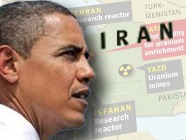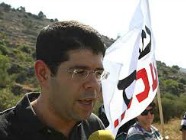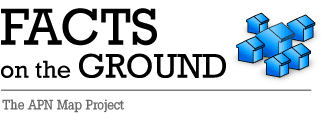West Bank Barrier
Over the past decade Israel has constructed a barrier - part fence and accompanying security roads and set-back areas, part cement wall - to separate Israel from the West Bank. Much of this barrier is located inside the West Bank, de facto annexing West Bank territory to Israel. The route of the security barrier has been challenged in the Israeli High Court on the grounds that it disproportionately harms Palestinian residents and on the grounds that the route in some areas was gerrymandered to accommodate settlement expansion plans. Most of the barrier has been completed but areas that are the most controversial -notably around Maale Adumim and in the area of Ariel - remain under debate.
The Green Line
After Israel's 1948 War of Independence, the 1949 Armistice line became the de facto border between Israel and Jordan. The line divided Jerusalem into two parts - Israeli West Jerusalem and Jordanian East Jerusalem, along a line that became widely known as the Green Line. After the 1967 War, when Israel captured and annexed East Jerusalem, the Green Line remained the international reference point, with land east of that line considered by the world to be occupied territory and Israeli construction across that line considered to be "settlements."
Israeli Municipal Jurisdiction
The built-up areas of West Bank settlements take up 1% of West Bank territory, but that is not the whole story. Many West Bank settlements have been granted control over land reserves on which they can eventually expand - sometimes reserves that are many times the size of the actual settlement - giving them control of nearly 10% of the entire West Bank. This land is all off-limits to Palestinian use.
more info
Palestinian Residential Areas
The West Bank is home to 2.5 million Palestinians, living in a number of large cities/towns, as well as in rural villages.
Area A
The 1993 Oslo Accords created three different categories of administrative areas in the West Bank:"Area A" is areas under full Palestinian Authority Control; "Area B" is areas under PA civilian control but Israeli security control; "Area C" is areas under full Israeli control. These administrative categories continue to apply today, although since the Second Intifada Israel has regularly disregarded Area A status in its security operations.
Area B
The 1993 Oslo Accords created three different categories of administrative areas in the West Bank:"Area A" is areas under full Palestinian Authority Control; "Area B" is areas under PA civilian control but Israeli security control; "Area C" is areas under full Israeli control. These administrative categories continue to apply today, although since the Second Intifada Israel has regularly disregarded Area A status in its security operations.
Area C
The 1993 Oslo Accords created three different categories of administrative areas in the West Bank:"Area A" is areas under full Palestinian Authority Control; "Area B" is areas under PA civilian control but Israeli security control; "Area C" is areas under full Israeli control. These administrative categories continue to apply today, although since the Second Intifada Israel has regularly disregarded Area A status in its security operations.
Outposts
Since the early 1990s Israel has committed to a policy of not establishing new settlements. However, while Israel has (generally) followed the letter of this commitment, it has not been faithful to the spirit of the commitment. Beginning in the mid-1990s, Israeli settlers - with the active and tacit support of successive Israeli governments, began establishing settlement "outposts" in the West Bank. These outposts, which have benefited from Israeli government investment and support, are wholly illegal under even Israel law, lacking necessary legal approvals and in many cases being established on privately-owned Palestinian land. Israel has repeatedly committed to removing these illegal outposts - notably under the Roadmap - but with only a few exceptions has taken no serious action. Today Israel appears more interested in looking for ways to "legalize" the outposts than in removing them.
Jerusalem Municipal Border
In 1967 Israel captured and annexed East Jerusalem, and along with it annexed a large area of the West Bank, including a number of Palestinian villages, a Palestinian refugee camp, a great deal of open land, and the Jerusalem airport. This expanded area was added to Israeli West Jerusalem (which was also expanded) to become the Israeli municipality of Jerusalem.
Old City
Jerusalem's Old City is the walled area of ancient Jerusalem. An area of less than 1 square kilometer, it is home to major holy sites for Jews (the Western Wall/Temple Mount), Muslim (the Dome of the Rock/Al Aqsa Mosque), and Christians (the Church of the Holy Sepulcher, the Via Dolorosa). The Old City is composed of the Jewish Quarter, which is the only ethnically homogeneous quarter (inhabited only by Israeli Jews), as well as the Muslim, Christian, and Armenian Quarters. Since 1967 Israeli settlers have targeted the latter quarters, with limited success (today there are approximately 85 settler families living in the Muslim Quarter). Events in the Old City, and especially around the Temple Mount, have been the catalyst for violence numerous times, including the 1996 riots following the opening of the Hasmonean Tunnel (adjacent to the Temple Mount) and the 2001clashes that followed the visit of Ariel Sharon to the Temple Mount and sparked the Second Intifada.
E1
E-1 is short for "East 1", the administrative name given to territory located northeast of Jerusalem and to the west of the settlement of Ma'ale Adumim. There is a a plan to build a large new settlement in this area. Construction of E-1 is highly controversial because it would effectively cut the West Bank in half, severing north-south contiguity in a future Palestinian state. In addition, it would sever access to East Jerusalem for Palestinians in the West Bank, making a peace agreement that creates a Palestinian capital in East Jerusalem all but impossible.
Hebron Municipal Area
Since the beginning of the settlement enterprise, Hebron has been the target of some of the most determined, ideologically motivated settlers, who determinedly acquired properties in the city. These included properties that had belonged to Jews prior to 1948 and made Hebron the only place in the West Bank where Israeli settlers and Palestinians live cheek-to-jowl. In the wake of the 1994 Hebron Massacre, when an Israeli-American settler murdered 29 Muslims at prayer in the Tomb of the Patriarchs, Hebron was effectively split in half in order to protect Israeli settlers from retaliation. The 1997 Hebron Agreement formalized this divide, with Hebron split into H1, which is home to 135,000 Palestinians and under the control of the Palestinian Authority, and H2, which is home to 800 Israeli settlers and 35,000 Palestinians who live under Israeli control.








 West Bank Overview
West Bank Overview West Bank Barrier
West Bank Barrier 
 The Green Line
The Green Line  Israeli Municipal Jurisdiction
Israeli Municipal Jurisdiction  Palestinian Residential Areas
Palestinian Residential Areas  Area A
Area A  Area B
Area B  Area C
Area C  Israeli Settlements
Israeli Settlements Outposts
Outposts  Jerusalem Municipal Border
Jerusalem Municipal Border  Old City
Old City  E1
E1 